Hungarian Dumplings, also known in Hungary as Nokedli or Galuska, are the perfect side to serve with my Chicken Paprikash or other hearty stews. Easy to prepare with only 4 pantry ingredients, these divine little dumplings are rustic in appearance, but delicate in flavor. Nokedli dumplings are basically a small, lighter version of egg noodles!
Table of Contents
When I first met Hungarian Dumplings
I first tasted the Central European little dumplings called Nokedli during college while studying in Vienna, Austria. The school lunchroom often served these little puffs of flavor, but by their German name – spaetzle. Lighter and more delicate than pasta, they were the perfect pairing to the various rustic stews they served.
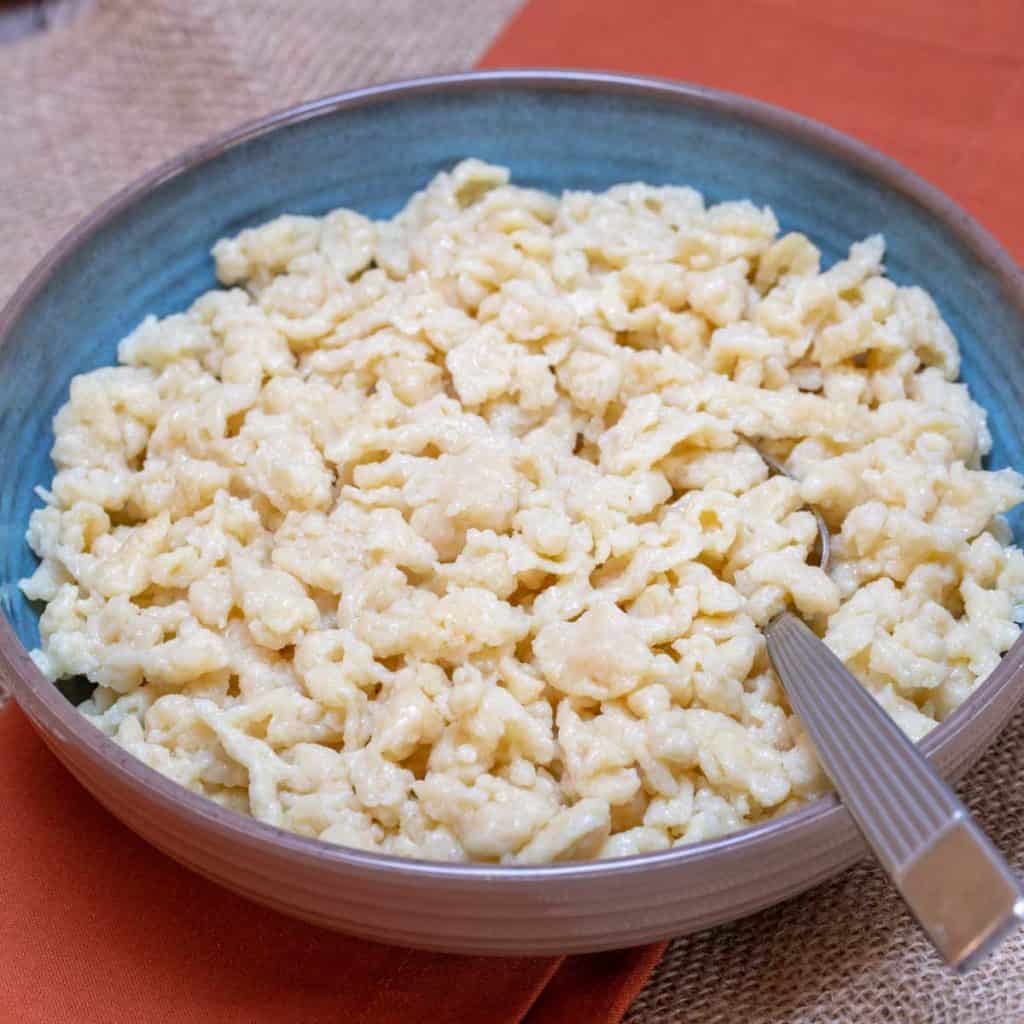
Years later when I was living in Europe, I often traveled to my company’s regional office in Budapest. One evening at dinner, to my delight these little dumplings arrived on my plate as an accompaniment to Hungarian Chicken Paprikash – this time under their Hungarian name, Nokedli.
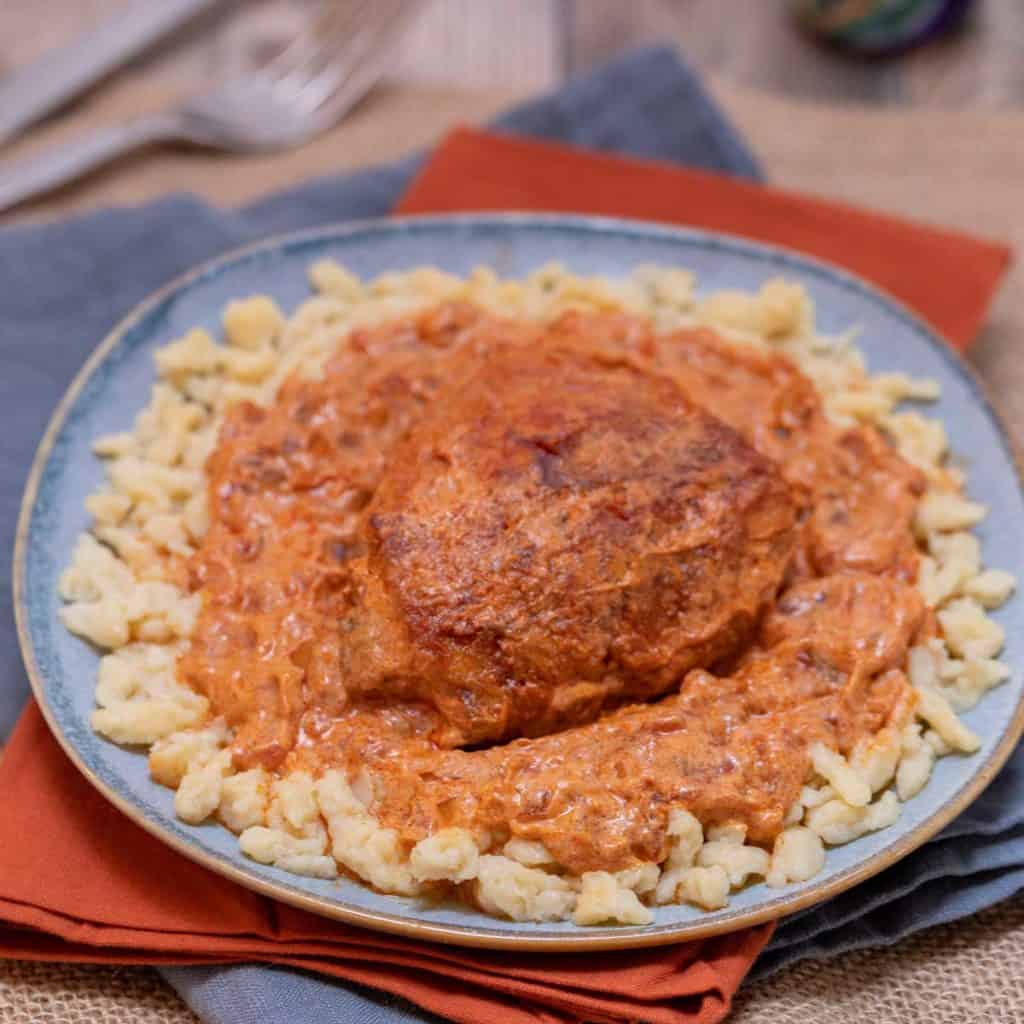
Learning to make Nokedli
Ever since that dinner, whenever I’ve made Chicken Paprikash I’ve yearned for those delicious little Hungarian dumplings to serve with it. I’ve attempted to make them, but they always seem to come out heavy and doughy. So, when I was in Budapest again on vacation as part of a bike trip, I convinced Robert and our friends Evie Haskell and Paul Maxwell to take a cooking class with me at Chefparade Cooking School. And, I made sure the menu included Nokedli!
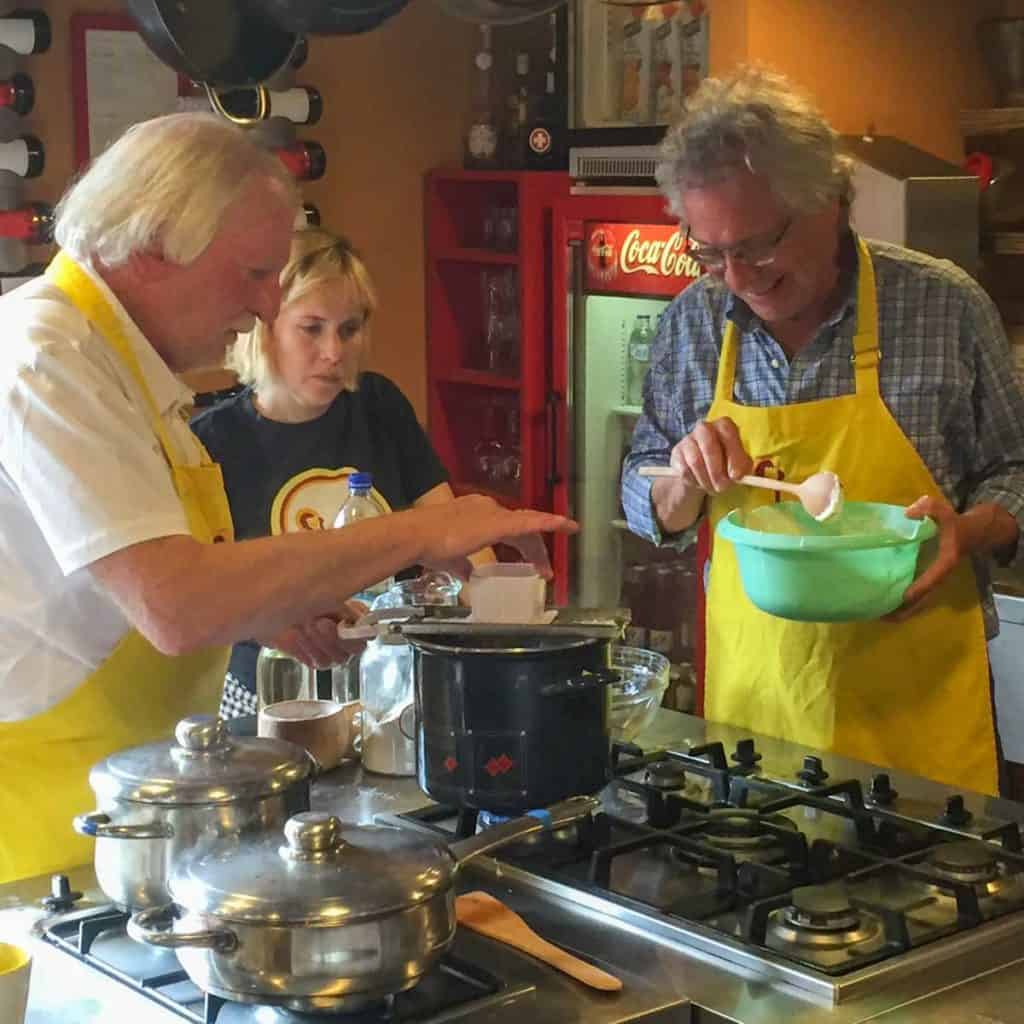
What are Hungarian Dumplings made of?
Nakedly are made with 4 ingredients – plus some oil (or butter) to keep the cooked dumplings from sticking together:
- Salt – I like to use kosher salt
- Large eggs – at room temperature
- All-purpose flour – preferably unbleached
- Water
- Canola or vegetable oil – preferably organic – can also use butter
How to make Nokedli (Hungarian Dumplings)
These tasty little dumplings are surprisingly easy to prepare, with only 4 pantry ingredients – eggs, flour, salt and a bit of oil.
- Mix together eggs, flour, salt and water to form a loose batter.
My mistake in earlier attempts to make Nokedli was creating a thicker, dough-like batter by adding too much flour. - Feed the batter through a Nokedli (or Spaetzle) maker to form small pieces that are dropped into boiling water.
You can also feed the batter through a slotted spoon, a flat cheese grater – or even a colander – held over the water. (I tested this recipe using a large slotted spoon and it worked well.) - In just a few minutes, all the dumplings rise to the top of the water, indicating they are done.
Scoop out, rinse under running water, put in a large bowl and toss with a bit of oil so they don’t stick together. (You can also toss with butter.)
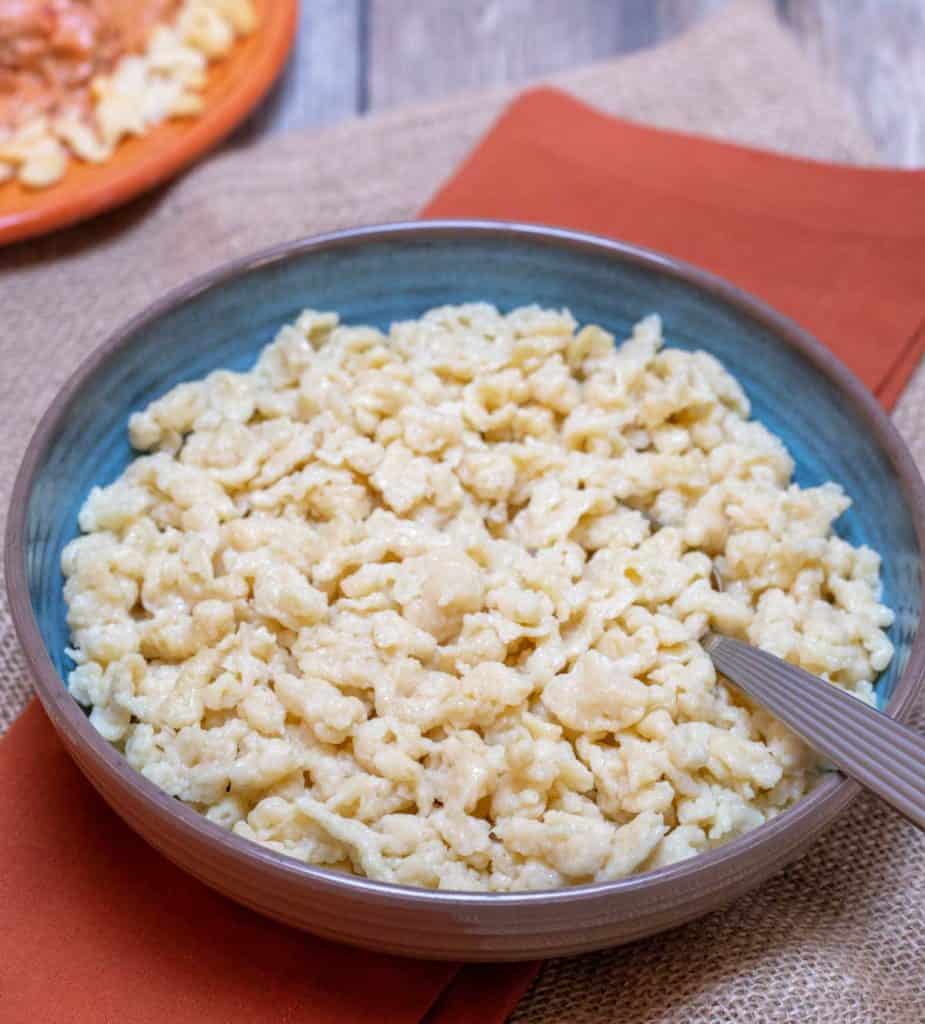
How to store and reheat Hungarian Nokedli
How long will Nokedli last in the refrigerator?
Leftover Hungarian Dumplings will last 2 to 3 days in the refrigerator.
Can Nokedli be frozen?
Yes, leftovers can be frozen for up to 2 months. Thaw in the refrigerator and follow reheating directions below.
How to reheat Nokedli
Dumplings can be reheated by sautéing them in a bit of butter or oil over medium-low heat.
Ways to serve Hungarian Dumplings
Nokedli is served most often as a side dish. Place in a serving bowl as part of a buffet, or spoon individual portions onto individual dinner plates. Here are some suggested main dishes that pair well with these dumplings:
- Hungarian Chicken Paprikash
- Short Ribs
- Braised Baby Back Ribs
- Sheet Pan Chicken with Mushroom Onion Sauce
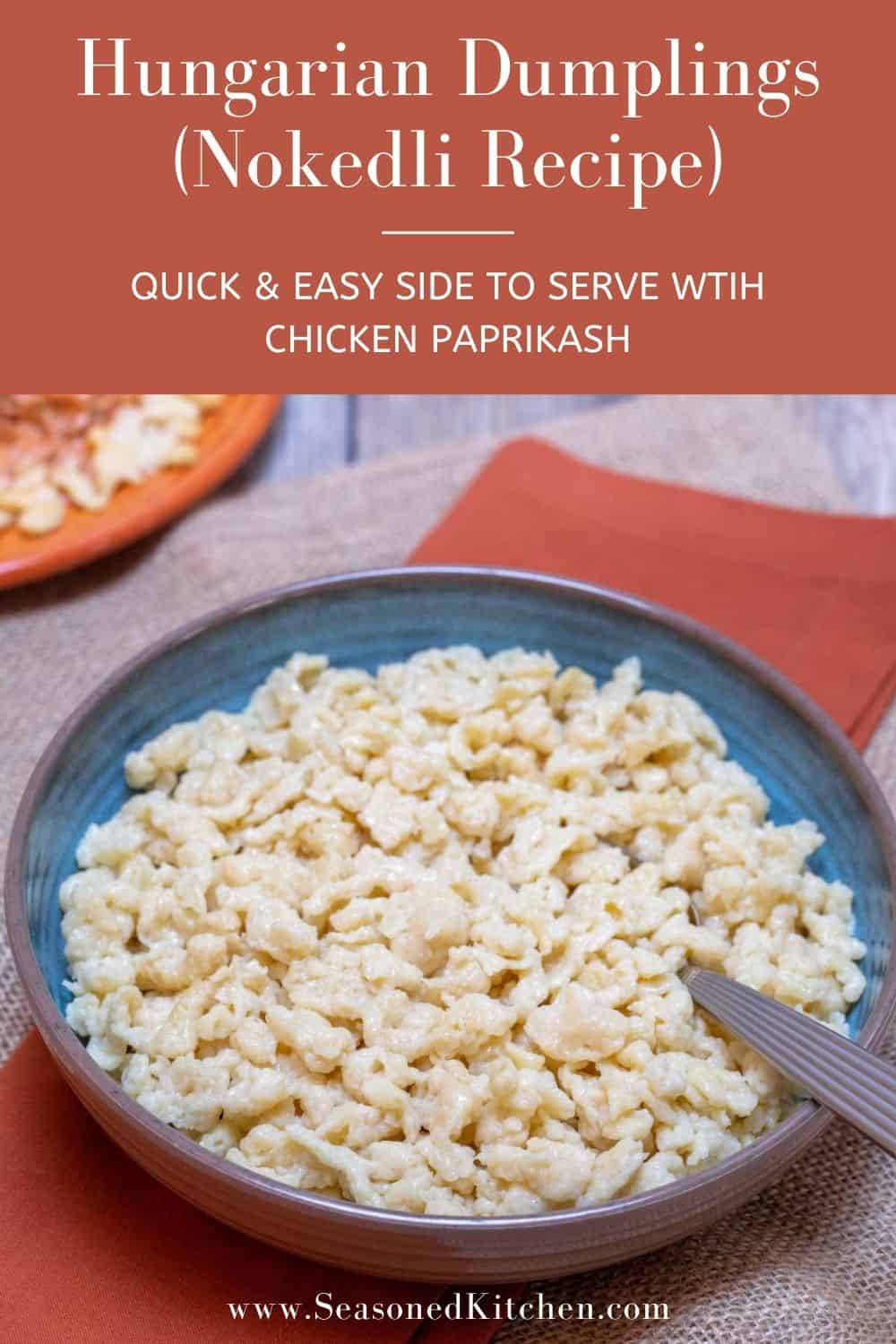
Hungarian Nokedli FAQs
There is no difference between the two – they are both Hungarian dumplings. I can’t find any information on why there are 2 Hungarian names for the same dish – if you know, please let me know!
Yes, they can be prepared 2 to 3 days ahead, covered and refrigerated. Reheat by sautéing in a bit of butter or oil over medium-low heat.
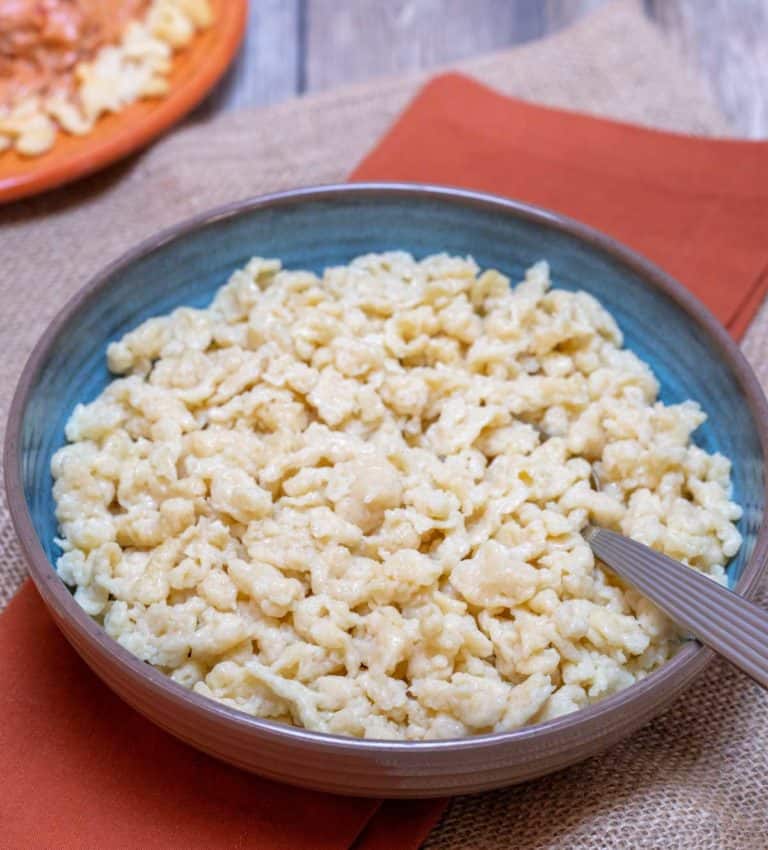
Nokedli or Galuska Recipe (Hungarian Dumplings)
Hungarian Dumplings, known as Nokedli or Galuska in Hungary, are the perfect side to serve with my Chicken Paprikash or other hearty stews. Easy to prepare with only 4 pantry ingredients, they’re rustic in appearance, but delicate in flavor. Nokedli are basically a small, lighter version of egg noodles!
- Yield: 5 to 6 servings 1x
- Diet: Low Fat
Ingredients
- 3 quarts + 3/4 cup water, divided use
- 1 tablespoon plus 1/2 teaspoon salt, divided use
- 2 large eggs
- 2 cups all-purpose flour
- 1 tablespoon organic canola or vegetable oil
Instructions
- Bring around 3 quarts water to a boil. Add 1 tablespoon salt.
- While waiting for the water to boil, make the batter: In a medium mixing bowl, whisk together eggs, 3/4 cup water and 1/2 teaspoon salt. Slowly stir in flour, 1/4 cup at a time. Batter should be sticky, but still a bit loose. You may not need to use all the flour.
- Form dumplings by pressing 1/3 to 1/2 cup batter through a dumpling maker (the large holes on a flat cheese grater, a colander with medium/large holes, or a slotted spoon will also work) directly into the boiling water. Cook for around 2 to 3 minutes. All of the dumplings should have floated to the top of the water.
- Using a slotted spoon, remove cooked dumplings from boiling water, place in a colander and rinse under cold water. Place cooked dumplings in a medium bowl and gently toss with the oil (to keep them from sticking together).
- Repeat with remaining batter.
- Serve immediately.
- Category: side dish
- Method: boiling
- Cuisine: Hungarian
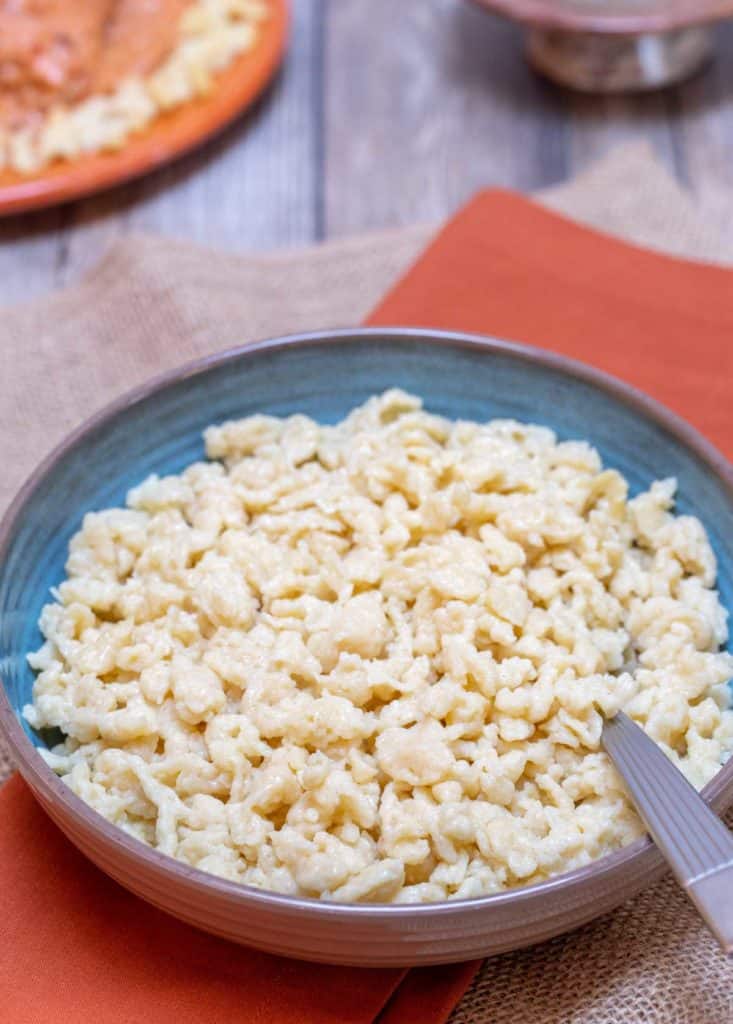
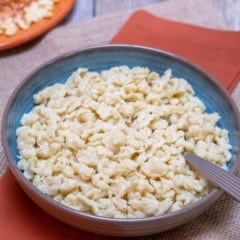




Fantastic. Just like my grandma used to make. ??
Thank you, Christina!
Delicious, your tips were SO helpful in aiding me to adapt what I remember from growing up, into my modern kitchen routine. I made 6 batches! Thank you
I’m happy to hear you enjoyed our recipe and found our tips helpful!
What do you mix it with sauce, butter, gravy?. Thank you, George
I serve it just like you would serve pasta. The recipe calls for tossing it with a bit of oil; you could use butter instead. My favorite way to serve it is with Chicken Paprikash.
This type of noodle is best with a very flavorful stew. But I believe my Swiss ancestors may have eaten them simply buttered, alongside chops or a roast. 🙂
One mistake I found, you have to use cake & pastry flour…It’s a must for authentic old country Hungarian Galuska.
Thanks for the feedback. I guess they taught us the new version in our class!
I make mine like mom and grandma made them by shaving dough over edge of dinner plate into boiling water. Takes longer, but delicious!
Clever! I’ll have to try that method. Thanks for sharing!